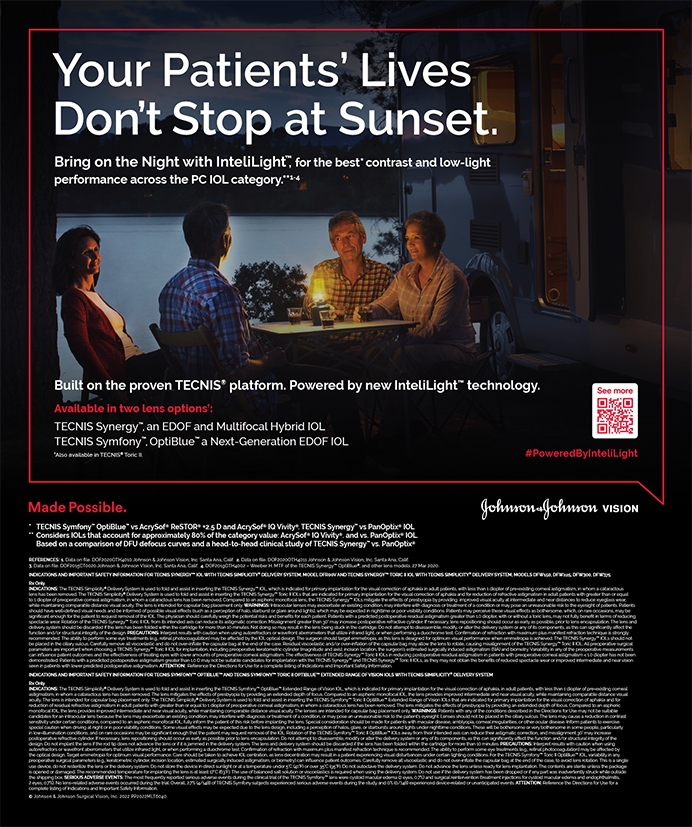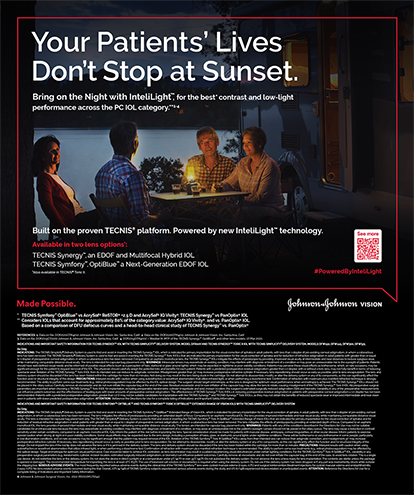One topic that all of us have a significant financial interest in is improving office and OR efficiency. Implementing a few simple strategies to streamline examinations in the office and ensure safety in the OR will increase your efficiency and your practice.
TIPS FOR THE OFFICE
Capitalize on Space
Do not share an examination room with technicians and optometrists. This is inefficient for you, and it deprives them of a space in which to carry out their responsibilities. Their office space can be small— approximately 6 X 8 feet—if you use modern equipment. In contrast, most examination lanes are almost four times that size at 12 X 15 feet. Instead of spending money to build more examination lanes, create a small space that is used solely by the technicians and optometrists.
Let Technicians Perform Examinations
What equipment should be in that small office for the technicians? In my practice, technicians are trained on the Marco Epic system (Marco, Jacksonville, FL), a threein- one device that performs autorefraction and autokeratometry, and it measures IOP using an air puff. It is not an inexpensive device, but it is well worth it.
Technicians use the Epic to measure pupils with the lights on or off. All new patients should have their pupils measured; this information is important for the quality of your work and for medicolegal reasons. Additionally, technicians should know how to manually measure the accommodative pupillary diameter, the size of the pupil while the patient is reading. In general, the smaller the pupil is during reading, the better the patient will do with a multifocal lens. If the patient’s BCVA is less than 20/30, then vision should be measured with best correction and a multiple pinhole over it. Technicians should also overrefract all patients who wear contact lenses.
As your practice becomes busier, you may find that it is more efficient to have one or two superstar technicians who are also skilled in performing slit-lamp examinations, biometry, topography, B-scans if a dense cataract is present, and an endothelial cell count when indicated by slit-lamp examination. These tests should be completed before you see the patient, because your job is to interpret the results. Otherwise, you will see the patient only to send him or her back to the waiting room until the tests can be done.
Educate While They Dilate
All patients should have their pupils dilated before you see them. After administering the mydriatic, the technician who performed the examinations should provide patients with educational handouts that are appropriate for their problem (astigmatism, cataract, etc.) to read while they wait to see you. These handouts should cover the topics that you find yourself discussing repeatedly all day, every day, with patients. My patients receive handouts on postoperative refractive outcomes, astigmatism, multifocal IOLs, zonular laxity and pseudoexfoliation, retinal detachment, aphakic refraction technique, dry eye disease, and lid care. Additionally, patients can view educational videos, preferably personalized by you, during this time.
TIPS FOR THE OR
Know How Much Time You Need
It is very important to know how long it takes you to perform a procedure. Underestimating your surgical times will make for a long day for you and the patients who are left waiting to undergo surgery. The length of time includes the time required in between procedures. Book your cases based on how much time you will realistically need. For example, you might schedule your easy cases first, because you know they will stay on time, and your more complex cases later in the day, because you are estimating how long they will take.
Decrease the Number of Posterior Capsular Tears
If you decrease the incidence of posterior capsular tears, you will streamline the efficiency of your surgery days. Lower the rate of posterior capsular rupture by (1) performing viscodissection for 180º and (2) protecting the posterior capsule during phacoemulsification and I/A (especially subincisional I/A) with a spatula or other blunt instrument. It is particularly important to do this if infusion misdirection occurs.
Prevent Endophthalmitis
Endophthalmitis can dramatically disrupt your practice and destroy an eye. To prevent this complication, every cataract patient in my practice receives intracameral vancomycin 1.0 mg/0.1 mL. The injection technique is key to the success of endophthalmitis prevention. For vancomycin to work, it must stay in the eye. I release a small amount of fluid from the eye and then inject the vancomycin. The cannula remains in the corneal tunnel to ensure that the drug does not leak out of the eye. Of 60,000 consecutive cases performed at my ambulatory surgery center—40% by me and 60% by other surgeons— we have had no cases of endophthalmitis after implementing this technique.
CONCLUSION
By collaborating effectively with your technicians, reducing patient’s surgical waiting time, and decreasing surgical complications, your practice will run more smoothly and efficiently.
Richard J. Mackool, MD, is the director of The Mackool Eye Institute and Laser Center in Astoria, New York. He acknowledged no financial interest in the product or company mentioned herein. Dr. Mackool may be reached at (718) 728-3400, ext. 256; mackooleye@aol.com.


